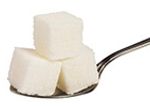Going mad over milk
by Guest Author,
- November 30, 2018
- Leave a comment

Georgina Journet, student dietitian Curtin University
On our cereal or in our hot beverages - for many Australians it is one of the first things we eat or drink when we wake up each morning. Yes that’s right, I’m talking about milk! In the past, it was delivered to your doorstep each day, but now we are faced with half an aisle dedicated to milk and plant-based milk alternatives that we have to make a choice from. So how do the plant-based alternatives really stack up against traditional cow’s milk?
Consider calcium
While cow’s milk is naturally a good source of calcium, plant-based milks are not. If calcium has not been added to your favourite milk alternative, you are missing out on an important source, and are unlikely to be reaching the recommended amount you need each day. We know calcium supports healthy bones and teeth, but it is also key for blood clotting, muscle contraction and proper nerve function.
TIP: Always choose calcium fortified milk alternatives, and check the ingredient label to see if it is the same as the calcium found naturally in cow’s milk. Aim for at least 100 mg of calcium per 100 ml.
Forget flavoured
Sweetened and flavoured plant-based milks contain added sugar, whereas cow’s milk contains a naturally occurring sugar, called lactose. Australians are eating too many processed foods high in added sugar, so we need to start thinking of ways to cut this down. Swapping sweetened for unsweetened plant-based milk is an easy start.
TIP: If you choose not to drink cow’s milk, check your alternative milk product for added sugar. If you prefer the taste of sweetened alternatives, mix sweetened and unsweetened plant-based milks. You can gradually reduce the amount of the sweetened milk alternative until you are only drinking the unsweetened alternative. This will help your taste buds adjust!
Eyeball the ingredients
Many plant-based alternatives are mostly water. If you have a look at the ingredient list, I will bet you $100 that water is the first ingredient listed. This means that the product is mostly water. The next ingredient is hopefully the plant-based ingredient, such as soy, rice, oats or almonds. By law, food companies must list ingredients from most to least by weight. If you find yourself staring at a label and the first three ingredients are: filtered water, sugar and almonds (2.5%), try to find one that doesn’t list sugar second and contains more of the plant ingredient. Alternatively you could choose reduced fat cow’s milk which contains - you guessed it - reduced fat milk.
TIP: Consider how much you are paying for filtered water. Try to find the brand with the highest amount of the plant ingredient, or choose reduced fat cow’s milk which simply contains milk.
Please won’t somebody think of the protein
Cow’s milk is a natural source of protein. As well as helping build and repair muscle, protein can also suppress appetite. So choosing a milk or milk alternative with protein is key to keeping you feeling satisfied for longer. Soy milk contains the most protein of all of the plant-based alternatives. Other alternatives such as oat, almond and rice will have a much smaller amount of protein.
TIP: Choose reduced fat cow’s milk or soy milk to keep you feeling fuller for longer and support your muscles.
So what’s the verdict?
Next time you are shopping for a plant-based milk alternative, spend a minute or two to find the best milk for you. There is quite a selection available, but keeping these tips in mind will help you to navigate the selection and find the best plant-based alternative for you!
Look for a plant-based milk that:
- Contains at least 100 mg of Calcium or more per 100 ml
- Is preferably unsweetened or unflavoured
- Has the highest plant ingredient percentage compared to other brands
- Contains protein if you are looking to feel full for longer
LiveLighter supports future health professionals through engagement with Australian Universities. This student blog was created for LiveLighter as part of Advanced Public Health Nutrition Practice coursework (Master of Dietetics at Curtin University, Western Australia).







